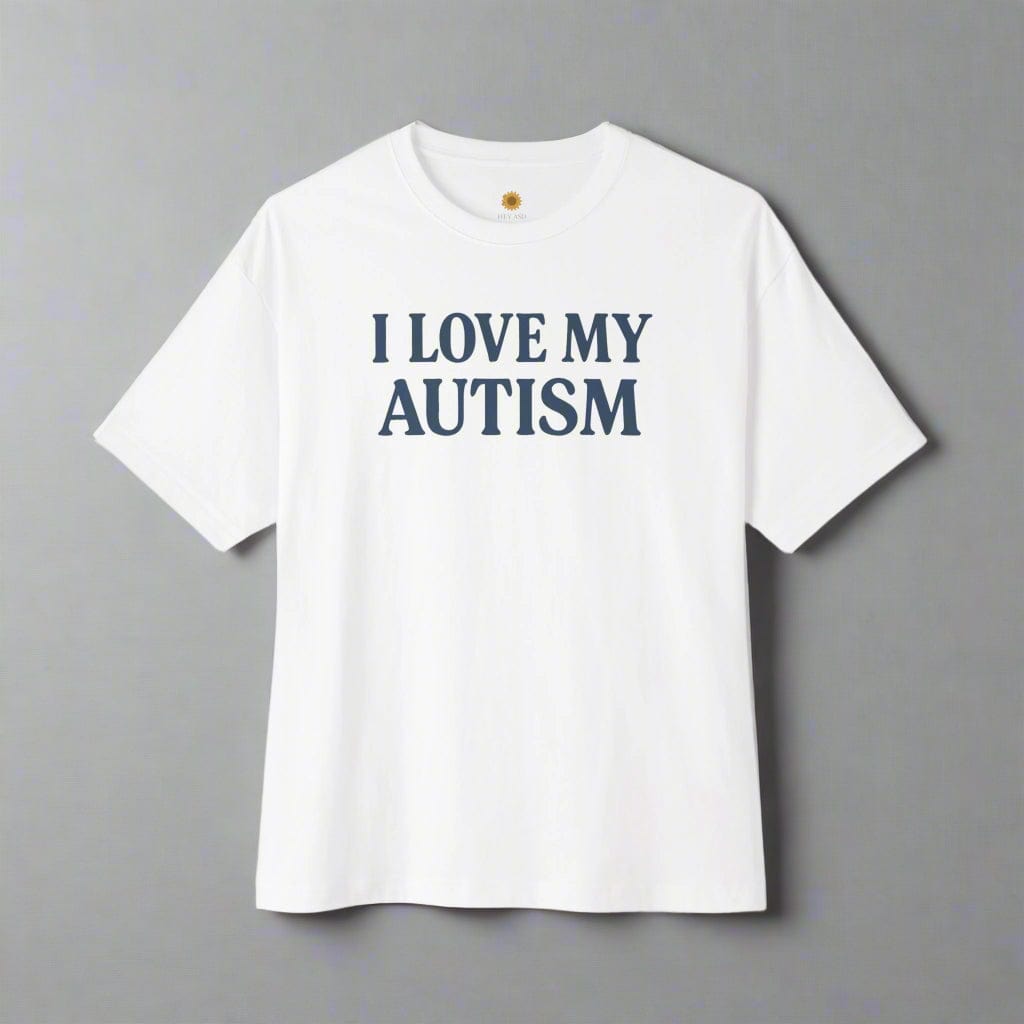Why ABA Therapy Remains Controversial in the Autism Community

Written by the HeyASD Editorial Team
Applied Behavior Analysis (ABA) is one of the most well-known therapies for autistic children, but it’s also one of the most debated. While some families see positive progress, many autistic adults describe harmful experiences that centered on compliance rather than connection. Understanding this divide is essential.
This article explores why ABA therapy remains controversial within the autism community — tracing its roots in 1960s behavioral psychology, the shift toward modern approaches, and the ethical questions driving today’s debate. The goal isn’t to judge but to empower you with information, compassion, and perspective.
Understanding ABA Therapy: History and Core Concepts
At its core, Applied Behavior Analysis is a type of therapy based on the science of learning and behavior. During therapy sessions, specific skills are broken down into small, manageable steps. The idea is to help autistic children and adults learn new skills and reduce behaviors that may cause harm, such as self-injury.
However, how these goals are achieved is central to the debate. Understanding where ABA comes from, its common techniques, and how it has evolved can help you see the full picture. We will explore its historical roots, its methods of reinforcement, and the shift toward more modern practices.
Early Beginnings: Roots in 1960s Behavioral Psychology
Applied Behavior Analysis first emerged from the field of behavior analysis in the 1960s. These early days of therapy were heavily focused on changing behavior through a rigid system of rewards and consequences. The primary objective was often to make autistic kids appear more like their neurotypical peers.
Unfortunately, some of these early methods were punishment-based and rightly earned criticism. The emphasis was on compliance, and therapists worked to eliminate autistic behaviors that were considered "undesirable," regardless of whether they were actually harmful.
This historical context is crucial for understanding why so much controversy still surrounds ABA today. The legacy of these early practices has left many autistic adults with negative experiences, shaping the ongoing conversation about ethics and consent in therapy.
Common Techniques: Reinforcement, Repetition, and Targeted Goals
The goal of ABA is to teach new skills through structured methods. One of the core ABA techniques is positive reinforcement, where a desired behavior is followed by a reward to encourage the person to repeat it. This can be anything from praise to a favorite activity.
Two common teaching methods used in ABA are Discrete Trial Training (DTT) and Pivotal Response Training (PRT). DTT involves breaking down a skill into small parts and teaching each part individually, while PRT is more play-based and occurs in a natural setting. The therapy focuses on targeted goals to build specific abilities.
Common applications of these techniques include:
-
Developing communication skills
-
Improving social interactions
-
Teaching daily living skills like dressing or hygiene
-
Reducing harmful behaviors
These methods are designed to be systematic, using repetition to help solidify new skills.
How ABA Therapy Has Changed Over Time
In response to criticism, the field of ABA has been slowly changing. Many modern ABA practitioners have moved away from the punishment-based methods of the past. Today, there is a much greater emphasis on using positive reinforcement to encourage positive behavior during therapy sessions.
Behavior analysts who practice modern ABA often state that their goal is not to "cure" autism or make someone less autistic. Instead, they aim to help individuals gain independence and functional skills that improve their daily lives. This can include learning to communicate needs, developing coping strategies, and participating more fully in their community.
This evolution is ongoing, but the shift acknowledges the harm caused by older methods. The focus is now more on working with the person's strengths and preferences rather than simply trying to eliminate autistic traits, though the quality of modern ABA can vary widely between providers.
Why ABA Became Mainstream for Autism Intervention
ABA therapy became a leading early intervention for autism for a few key reasons. A large body of research has suggested it can be effective in teaching certain skills and reducing behaviors deemed challenging. This research has helped position ABA as a go-to therapy recommended by many medical professionals.
Its widespread availability and structured approach also contributed to its popularity among parents and educators seeking support. The sections below will look closer at the research that supported its rise, how insurance coverage played a role, and its broad adoption across the United States.
Research Foundations and “Gold Standard” Status
For decades, numerous studies on Applied Behavior Analysis have reported positive outcomes in skill development for autistic people. This body of research has been instrumental in ABA treatment being labeled the "gold standard" by some organizations and practitioners. The studies often highlight improvements in language, academic, and daily living skills.
These findings have given many families hope and provided a structured path for intervention. Supporters argue that when implemented correctly, ABA is a well-researched method for increasing functional skills and independence, not just for autistic people but for others with developmental disabilities.
However, critics question whether these studies measure the right things. While a therapy might change behavior, it may not be improving a person's internal well-being.
|
Stated Goal of ABA |
Neurodiversity-Affirming Concern |
|---|---|
|
Increase "desirable" behaviors |
Who decides what is desirable? |
|
Decrease "undesirable" behaviors |
Are these behaviors harmful or just different? |
|
Help individuals appear more "neurotypical" |
This can lead to masking and autistic burnout. |
|
Improve social skills |
Are skills taught authentically or as a script? |
Influence of Insurance Coverage on ABA’s Rise
The widespread availability of insurance coverage for ABA has been a major factor in its dominance. In many states, laws mandate that private and public health insurance plans cover ABA therapy for autism. This has made it one of the most accessible and financially viable options for many families.
Because of this coverage, finding an ABA provider is often easier than finding providers for other types of therapy. ABA programs, staffed by a certified behavior analyst, became the default choice for parents who were told it was the best, and often only, covered intervention.
This financial and systemic support created a cycle: as more insurance plans covered ABA, more providers emerged, and it became even more entrenched as the standard approach. This left families with fewer practical choices, even if they had concerns about the therapy itself.
Widespread Adoption in the United States
ABA therapy is widely practiced across the United States, especially as a form of early intervention. Many pediatricians and diagnostic centers recommend it as the first step after an autism diagnosis. This has led to a massive industry of ABA therapists and centers nationwide.
The therapy’s structured nature, which involves intensive therapy sessions, often appeals to school systems and parents who are looking for clear, measurable progress. ABA’s goals are typically broken down into concrete data points, making it easy to track changes over time.
However, this widespread adoption also means that many families are introduced to ABA without being informed of the controversy or alternative approaches. The sheer prevalence of ABA in the United States can make it seem like the only option, overshadowing other therapies that may be more affirming and a better fit for some autistic people.
The Heart of the ABA Therapy Controversy
The ABA therapy controversy stems from a fundamental disagreement about the goal of autism support. Is it to help autistic people thrive as they are, or is it to make them act more like non-autistic people? Many autistic people and organizations like the Autistic Self Advocacy Network argue that ABA, particularly in its traditional form, focuses on the latter.
This has led to powerful testimonies from autistic adults who feel the therapy was harmful. Their experiences are at the heart of the debate, highlighting concerns about compliance-based methods, trauma, and the suppression of authentic autistic identity.
Historical Use of Compliance-Based Practices
A major source of the controversy is ABA's history with compliance-based methods. The goal of ABA therapy in its early form was often to achieve obedience above all else. Therapists aimed to eliminate behaviors that were seen as disruptive or non-compliant, using punishment to do so.
In its most extreme forms, this included the use of aversives, which are unpleasant stimuli designed to stop a behavior. Some facilities, like the Judge Rotenberg Center, have been widely condemned for using painful interventions, such as electric shock devices, as part of their behavioral programs.
While most modern ABA practitioners do not use such extreme methods, the historical focus on compliance remains a deep concern for critics. They argue that teaching an autistic child to comply without question can make them vulnerable and strip them of their autonomy.
Reports of Trauma and Dismissal of Autistic Voices
One of the most serious criticisms of ABA comes from autistic people who report that the therapy was a source of trauma. A 2018 study suggested a link between childhood ABA exposure and a higher likelihood of experiencing post-traumatic stress disorder (PTSD) symptoms later in life.
Forcing children to suppress their natural instincts and behave in ways that feel unnatural can activate a constant sense of threat, similar to a "fight, flight, or freeze" response. The Autistic Self Advocacy Network and other groups amplify the voices of autistic people who describe ABA as a process that taught them shame and negative self-perception.
These reports highlight a disconnect between the therapy's intended outcomes and the lived experiences of many who have gone through it. The focus on outward behavior change often ignores the internal distress it may cause.
"I wasn’t traumatized by therapy — I was traumatized by being told I was wrong for being myself." – Autistic adult, lived experience
Suppression of Stimming, Self-Expression, and Authenticity
Stimming, or self-stimulatory behavior, includes repetitive movements like rocking, hand-flapping, or humming. These are natural autistic traits that help with emotional regulation, focus, and coping with sensory overload. However, traditional behavior modification approaches in ABA often targeted stimming for elimination because it looked "different."
Suppressing stimming can be harmful, as it takes away a vital coping mechanism. This can lead to increased anxiety, distress, and autistic burnout. Furthermore, discouraging these behaviors sends a powerful message that a person's authentic self is wrong and needs to be hidden, a process known as masking.
True self-expression is about embracing who you are, whether that's through stimming, sharing special interests, or showing your autism pride with items like autism T-shirts or autism jewelry. Therapies that prioritize conformity over authenticity can damage a person's sense of identity and well-being.
Modern ABA vs. Traditional ABA: Evolving Approaches
It's important to recognize that not all ABA is the same. In response to valid criticism, some behavior analysts are working to create a more compassionate and ethical form of modern ABA. These evolving approaches aim to move away from the rigid, compliance-focused ABA techniques of the past.
Instead of trying to eliminate autistic traits, these newer models focus on understanding the "why" behind a behavior and building on a child's strengths. The following sections explore what these child-led models look like and whether all providers have adapted to these modern standards.
Newer Child-Led, Neurodiversity-Affirming Models
Influenced by the neurodiversity movement, some ABA practitioners are shifting toward child-led models. This approach prioritizes the child's own motivations, interests, and assent. Instead of rigid drills, therapy might look more like natural play, with the therapist following the child's lead to teach new skills.
The focus is on promoting positive behavior by understanding the person's needs and providing support, rather than just correcting their actions. A neurodiversity-affirming therapist sees autistic traits as differences, not deficits, and respects the individual's autonomy. They work collaboratively to set meaningful goals.
Key features of these models include:
-
Prioritizing the child's consent and willingness to participate.
-
Incorporating special interests into therapy sessions.
-
Teaching self-advocacy and emotional regulation skills without suppressing stimming.
Do All ABA Providers Use Outdated Methods?
The short answer is no, not every ABA provider uses outdated, harmful methods. Many dedicated professionals in the field are actively working to reform its practices. A good board certified behavior analyst today should be focused on positive reinforcement and supporting other therapies like occupational and speech therapy.
However, the quality and philosophy of an ABA provider can vary dramatically. Some still practice a more traditional ABA that focuses on compliance and masking. Because the field is not uniformly regulated in its approach, the "ABA" label doesn't tell you everything about what happens in therapy sessions.
This is why it's so important for parents and autistic people to carefully vet any potential provider. As one professional noted, just as we don't judge modern medicine by historical practices like bloodletting, many in ABA are trying to learn from past mistakes and move forward ethically.
Assessing Changes in ABA Practice and Ethics
The conversation around ethics in ABA is growing louder, and changes are happening, albeit slowly. The Behavior Analyst Certification Board (BACB), the main credentialing body, has updated its ethics code to include more emphasis on client assent and minimizing the use of punishment.
However, critics argue these changes don't go far enough to address the core problems. The practice of modern ABA therapy is still largely centered on changing behavior, and the line between supportive change and harmful normalization can be blurry. Assessing whether a practice is truly ethical requires looking beyond certifications.
It involves asking questions about the therapy’s goals. Is the focus on building skills the person wants and needs, or is it on making them appear less autistic? The future of ABA ethics depends on practitioners genuinely listening to and learning from the autistic community.
Ethical Questions Driving the Current ABA Therapy Controversy
The current ABA therapy controversy is fueled by deep ethical questions. At the forefront is the issue of "normalization"—should therapy aim to make an autistic person fit into a neurotypical world? The neurodiversity movement argues that this goal is inherently flawed and disrespectful to autistic identity.
These questions challenge the very foundation of some behavioral interventions. Below, we'll examine the critical concepts of consent and autonomy in therapy, the importance of centering neurodiversity in all forms of support, and what truly affirming interventions look like.
“Normalization,” Consent, and Autonomy in Therapy
A central ethical criticism of ABA is its potential goal of normalization. This is the idea that autistic people should be taught to behave like their non-autistic peers. Critics argue this approach devalues the autistic way of being and can harm a person's self-worth.
This raises serious questions about consent and autonomy, especially when therapy is for young children who cannot fully agree to their treatment plan. Does a child have the right to say "no" to therapy? An ethical approach must respect a person's bodily autonomy and focus on goals that genuinely improve their quality of life, as defined by them.
Instead of aiming for normalization, therapy should empower individuals with tools to navigate the world on their own terms. The focus should shift from changing who a person is to providing the support they need to thrive authentically.
Importance of Centering Neurodiversity in Support
The neurodiversity movement offers a powerful alternative to the "fix-it" model of autism support. It reframes autism and other developmental disabilities as natural variations in the human brain, not as defects to be corrected. Centering neurodiversity means accepting and respecting these differences.
When therapy is neurodiversity-affirming, the goal isn't to eliminate autistic traits but to provide support where it's needed. For example, instead of stopping a person from stimming, a therapist might help them find ways to stim that are safe and don't cause harm. This approach honors the person's needs and experiences.
This perspective is crucial for the mental health of autistic people. It fosters self-acceptance and resilience, helping individuals build a positive identity. True support celebrates diversity and helps people navigate challenges without asking them to hide who they are.
Advocacy for Truly Affirming Interventions
Advocacy from parents and autistic adults is essential for shifting the landscape of autism support toward affirming interventions. This means actively seeking out therapies that respect autonomy and celebrate neurodiversity. Autistic self-advocacy plays a key role in ensuring that therapy goals align with an individual’s own desires for their quality of life.
When choosing a therapy, it's vital to ask critical questions. Are the therapists trained in neurodiversity? Is the child's happiness and emotional well-being prioritized over compliance? Do they support self-expression, whether through a cool autism hat or by encouraging special interests?
Signs of an affirming intervention include:
-
Focusing on the person's strengths and interests.
-
Teaching skills for self-advocacy and consent.
-
Respecting all forms of communication and self-expression. Finding this kind of support helps build a foundation of self-worth and confidence.
Key Takeaways: ABA Therapy Controversy
- ABA therapy has a complex history rooted in behavioral psychology and compliance-based methods.
- Many autistic adults report trauma from early ABA practices that discouraged natural behaviors like stimming.
- Modern ABA is evolving toward child-led, neurodiversity-affirming models focused on autonomy and consent.
- Families are encouraged to explore affirming alternatives and ask questions about ethics and approach.
- True autism support empowers individuals to thrive authentically — not to appear “less autistic.”
Conclusion
The controversy surrounding ABA therapy reflects a deeper conversation about what true support for autistic individuals should look like. Moving beyond compliance and normalization, the future of autism therapy lies in empathy, autonomy, and respect for neurodiversity.
Whether you’re an autistic adult reflecting on past experiences or a parent exploring therapy options, remember: meaningful support honors identity rather than reshaping it. The most ethical and effective therapies are those that nurture self-understanding, self-expression, and belonging.
Honor Identity with Gentle Expression
Celebrate authenticity and awareness through our sensory-friendly jewelry — thoughtfully designed by and for the autism community. Every piece supports comfort, self-expression, and advocacy.
Explore Jewelry CollectionFrequently Asked Questions
What are the main principles of ABA therapy, and how is it applied in autism treatment?
Applied Behavior Analysis uses principles of learning to teach skills to autistic children. ABA therapists often use positive reinforcement to encourage behaviors like communication and social skills. The therapy breaks down goals into small, manageable steps, which are taught through repetition in structured or play-based settings.
What are some common criticisms of ABA therapy within the autism community?
Many autistic people and advocates, including the Autistic Self Advocacy Network, criticize ABA therapy for its focus on behavior modification that can lead to masking and trauma. They argue it often tries to suppress natural autistic traits like stimming and prioritizes compliance over an individual's well-being and autonomy.
How do parents and caregivers decide whether ABA therapy is appropriate for their child?
Parents can decide if ABA is appropriate by thoroughly researching any ABA provider. This includes observing therapy sessions, asking about the therapist's approach to autistic traits, and ensuring the treatment plan is child-led and flexible. It's crucial to prioritize their child's happiness and emotional safety over compliance.
What alternative therapies or approaches to autism exist alongside ABA therapy?
Many alternatives to ABA exist. These include developmental approaches like speech therapy and occupational therapy, which focus on specific skills. Relationship-based models like DIR/Floortime and play therapy focus on emotional connection, while positive behavior interventions support individuals without seeking to normalize them.
How can individuals advocate for their preferences and needs when it comes to autism treatment options?
Individuals can practice self-advocacy by clearly communicating their goals and boundaries to therapists. This includes stating which autistic traits are important to them and refusing any part of an ABA program that feels harmful. Choosing therapies that improve quality of life on your own terms is a powerful form of advocacy.
On This Page
Frequently asked questions
What are the main ethical concerns in ABA therapy that I should be aware of?
How can I support a loved one who is experiencing sensory challenges related to autism?
What does sensory-friendly autism support look like in everyday environments?
How can disability support for autism be tailored to respect individual autonomy and preferences?
Are there autism-friendly products, like calming blankets or sensory tools, that can complement behavior therapy?
How do I navigate the ABA therapy controversy when considering treatment options for myself or a family member?
What are some respectful ways to discuss autism behavior therapy with professionals and advocates?
How can I find resources that balance the benefits of ABA therapy with awareness of its criticisms?
Can Autism-themed decor or clothing, such as t-shirts, help promote acceptance and understanding in my community?

About the HeyASD Editorial Team
Autistic‑owned • Values‑led • Sensory‑friendly design
We are autistic creators, writers, and advocates dedicated to producing resources that are practical, sensory-aware, and grounded in lived experience. Our mission is to make information and products that support the autistic community accessible to everyone, without jargon or condescension. Learn more about our team.
This article is written from lived autistic experience and an evidence-aware perspective. It is for general informational purposes only and should not be taken as medical, legal or therapeutic advice.
Always consult a qualified clinician or occupational therapist for individual needs and circumstances.

About Our Autism Blog
HeyASD isn’t just a store, it’s a calm, supportive space created by and for autistic adults. Our blog shares sensory-friendly tips, identity-affirming stories, and heartfelt resources for navigating life as an autistic person. Whether you're late-diagnosed, exploring your needs, or supporting someone you love, you're welcome here.
Thank you for reading. We hope these resources bring comfort and clarity.





































